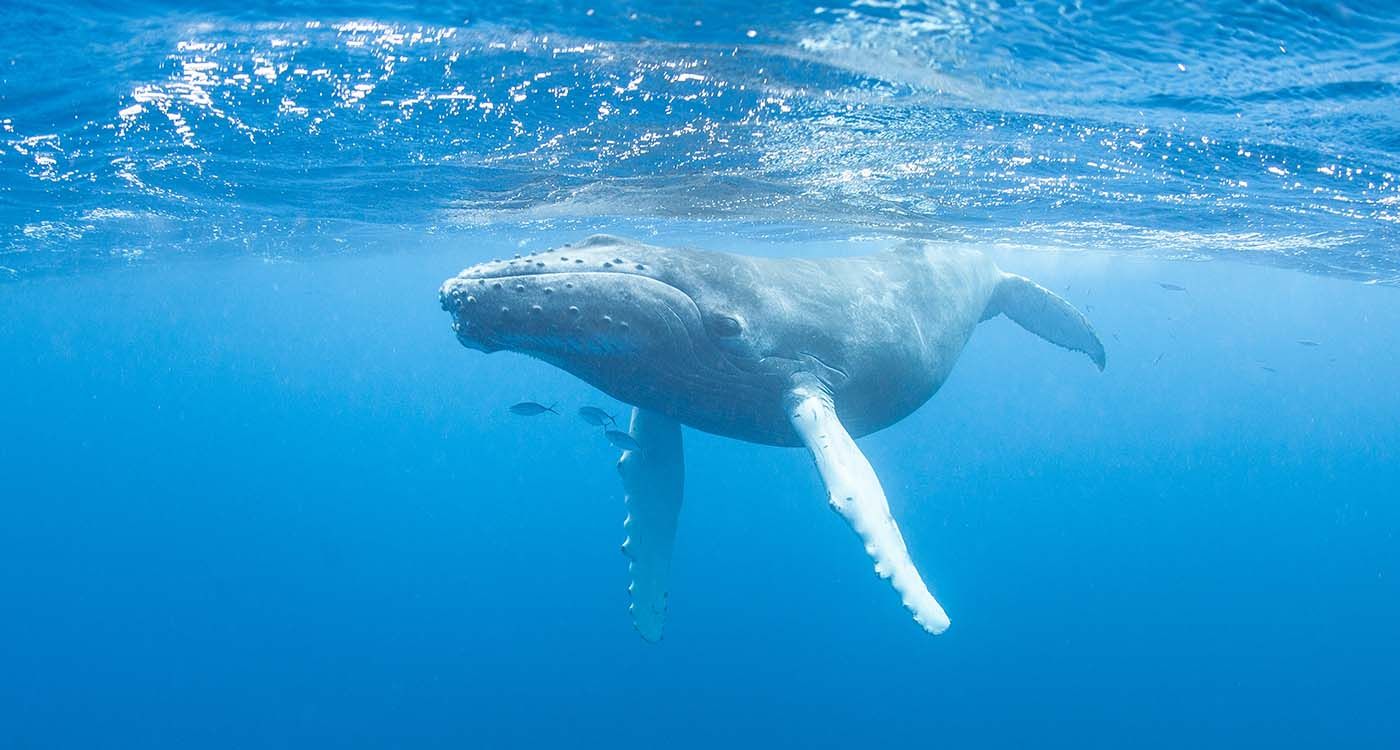
What if whales were trying to talk to us all along? Thanks to artificial intelligence (AI), researchers are beginning to unravel the complex sounds of these ocean giants. Their responses to human calls and intriguing behaviors suggest that true interspecies communication might be within reach.
For decades, scientists believed whales sang only to navigate, attract mates or maintain social bond. But recent research by the SETI Institute and the University of California, Davis is challenging this view. Using AI, researchers have identified remarkably structured acoustic patterns and behaviors suggesting some cetaceans may be attempting to communicate with humans.
The most striking example involves a humpback whale named Twain. In 2021, scientists played her a contact call—a vocal signal whales use to announce their presence. Twain’s response astonished the team: not only did she answer 33 times, but she also adjusted the timing between her calls to match the rhythm of the human transmissions, as if she were engaging in a real dialogue.
In a 2023 study published in PeerJ, the team led by Brenda McCowan and her team from UC Davis and SETI described the exchange, “The whale, later identified as a 38-year-old female named Twain, responded to our recorded call 33 times, engaging in what can be described as a turn-taking. Throughout the 20-minute interaction, Twain adjusted the interval between each call to mirror our variations.”
McCowan added, “We believe this is the very first communicative exchange of its kind between humans and a humpback whale, conducted in the whale’s own ‘language.’” (PeerJ, 2023)
This breakthrough was made possible by AI analyzing thousands of hours of underwater recordings. The CETI (Cetacean Translation Initiative) project, led by a multidisciplinary team, is working to decipher the codas of sperm whales—brief click sequences that vary by group and social context.
In a 2025 interview with The Guardian, CETI founder David Gruber explained, “What we’re doing with sperm whales is exactly what we’d attempt if we encountered an intelligent species on another planet: trying to decode their language from scratch.”
When the Whale Responds
Whale communication extends beyond sound. Recent observations reveal some whales also use gestures and visual signals. A study published in June 2025 in Marine Mammal Science documented 39 ring-shaped bubble formations created by 11 humpback whales—exclusively in the presence of humans—a behavior never observed during hunting, play or mating.
Dr. Fred Sharpe, co-author of the study, explains, “We observed whales blowing bubble rings toward us, seemingly to playfully interact, gauge our reactions or initiate communication.”
Jodi Frediani, also co-author, adds, “We identified a dozen whales worldwide, most of which deliberately approached boats or swimmers and blew these bubble rings during moments of curiosity.” (Marine Mammal Science, June 2025)
For SETI researchers, this drive to connect parallels what they hope to find in extraterrestrial life. Whales might be the first non-human intelligent species with which we have a chance to communicate.
Laurance Doyle, astrophysicist at SETI, stated in June 2025, “A fundamental assumption in the search for extraterrestrial intelligence is that such intelligence would seek contact. This seems validated by the independent emergence of curious behavior in humpback whales.”
These discoveries raise profound questions: If an intelligent species is trying to speak to us, do we have a responsibility to respond? Are we even capable to do it? And what does “speaking” mean when the language consists of clicks, sounds, water and waves?
In an era marked by ecological collapse and oceanic upheaval, this new way of listening offers an unexpected glimmer of hope. Perhaps whales have been trying to talk to us all along, we just never knew how to listen. With AI and renewed attention, we may be on the brink of the first true interspecies dialogue.




Comments